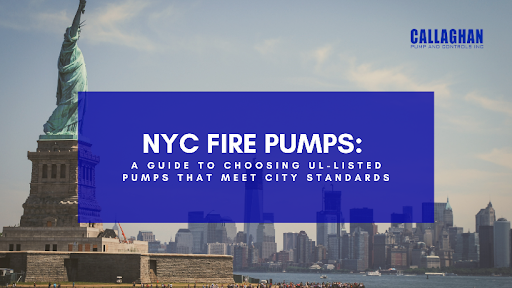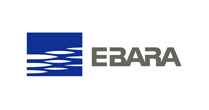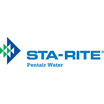NYC Fire Pumps: A Guide to Choosing UL-Listed Pumps That Meet City Standards
May 8th, 2025
In New York City, fire safety isn’t something you can take lightly. Building codes are strict, and for good reason—it’s about keeping people safe when it matters most. One of the key pieces in the puzzle? An NYC fire pumps that can deliver water pressure exactly when needed.
But here’s the thing—just any pump won’t cut it. It needs to be UL-listed and meet specific NYC standards. In this blog, we’ll explain what you need to know to choose the right one. Let’s dive in.
Understanding UL-Listed Fire Pumps in New York
A UL (Underwriters Laboratories) listing indicates that an NYC fire pump has been tested and passes safety and performance requirements. Underwriters Laboratories certifies fire protection pumps to meet ANSI/UL 448 for centrifugal stationary pumps and ANSI/UL 1247 for diesel engines driving stationary fire pumps. These standards ensure equipment can perform crucially in emergencies.
NYC-Specific Requirements for Fire Pumps
NYC has specific rules for fire pump systems. These go beyond the national standards. You need to follow them to keep buildings safe and projects on track.
- Installation Standards: NYC fire pumps must be installed per NFPA 20, as modified by the NYC Building Code. For instance, multistage, multiport fire pumps are prohibited, and specific construction standards for pump rooms are mandated. These modifications ensure compatibility with the city’s infrastructure and safety protocols.
- Capacity Requirements: Fire pumps must be provided in buildings over 300 feet to offer specified capacities and pressures. This ensures sufficient water pressure reaches all floors in emergencies. Such measures are necessary for safety in high-rises.
- Physical Installation: Place pumps on a concrete pad at least 12 inches above the pump room floor level. Clearances must be held on all sides for maintenance and inspection. If the dust collector system is installed correctly, it can work efficiently and be durable.
Selecting the Right NYC Fire Pump
Choosing the correct fire pump for your NYC building is essential. It ensures that the system works when it’s most needed. Understanding your building’s requirements, water source, and electricity alternatives will enable you to make the best decision. Here are some factors to consider:
- Building Height and Design: High-rise structures should have pumps to provide enough pressure to the top floors. The type and capacity of the pump required are determined by the structure’s architectural design.
- Water Supply Source: Determine if a city main, suction tank, or other permitted source will power the pump. Pumping designs vary depending on the pump’s operational needs. Reliable performance requires an appropriate water source.
- Power Source: Choose between electric and diesel pumps based on power, reliability, and maintenance. Electric pumps require a steady power source, but diesel pumps do not rely on the grid. The selection impacts installation, operation, and compliance factors.
- Compliance Documentation: Ensure that the NYC fire pump comes with test results verifying performance at 50%, 100%, and 150% capacities, as required by NYC standards. Proper documentation demonstrates adherence to regulatory requirements. This verification is crucial for inspections and certifications.
Maintenance and Inspection of NYC Fire Pump
Regular inspections and maintenance are necessary to keep a NYC fire pumps in top shape. Fire pumps are essential for building safety. If they fail during an emergency, the results can be catastrophic. NYC standards provide clear guidelines to ensure these pumps are ready when needed.
- Weekly Inspections: Inspect pump components, operation, and power systems. Routine inspections allow for early detection of problems. It is necessary to maintain it on time to avoid potential failures during emergencies.
- Monthly Tests: Review pump operation and system performance. The monthly testing keeps the system within the supply parameters and will seamlessly integrate the users into the system. Performance reviews are essential for both safety and compliance.
- Annual Inspections: Perform a thorough servicing of all equipment, from diesel systems to electrical. Yearly inspections allow wear and tear to be identified and upgrades to be outlined.
Building owners and contractors may ensure safe and efficient fire protection systems by engaging with competent distributors such as Callaghan Pump and identifying their specific needs. Need guidance on selecting the appropriate NYC fire pump for your facility? Contact us today for more information.













